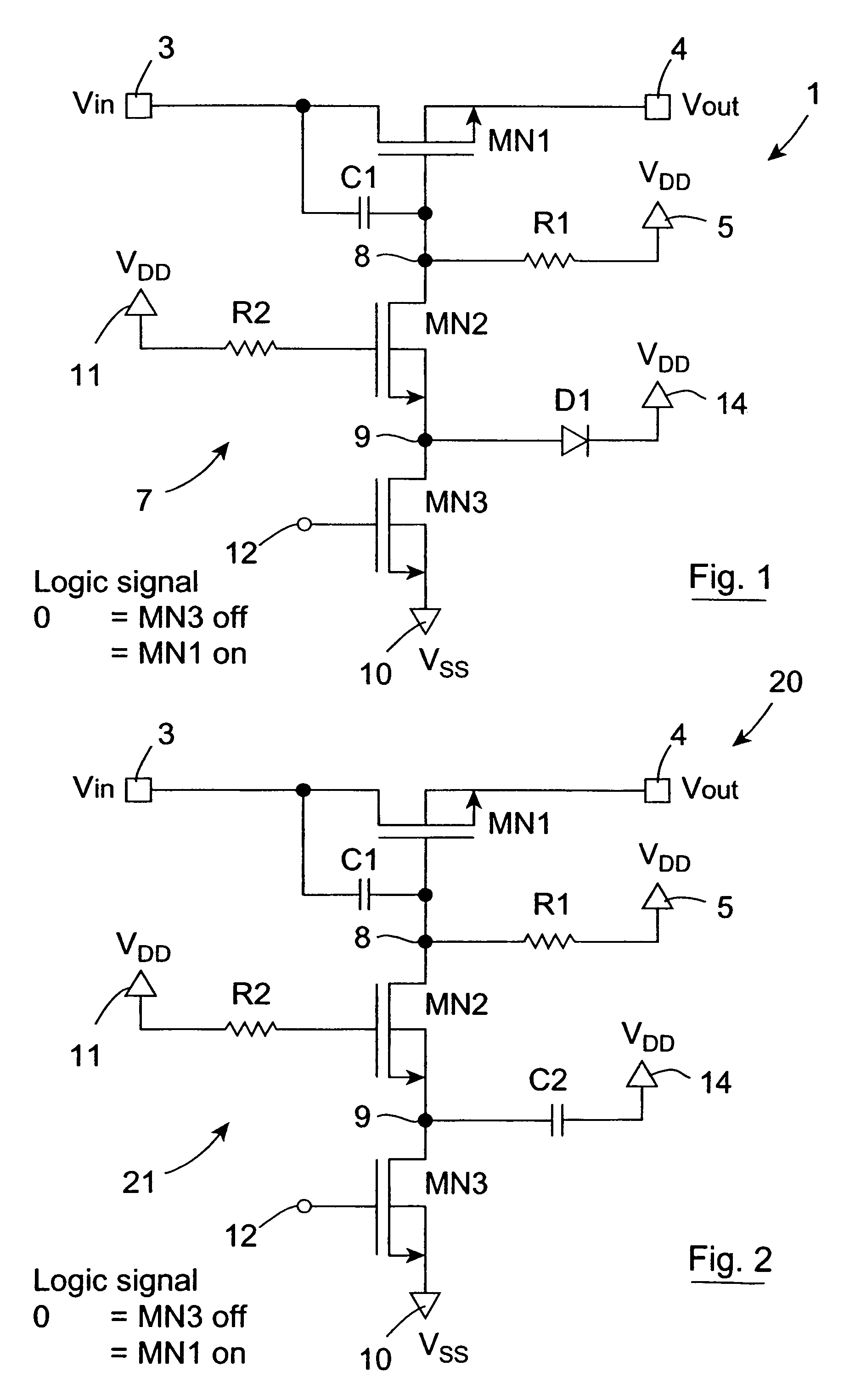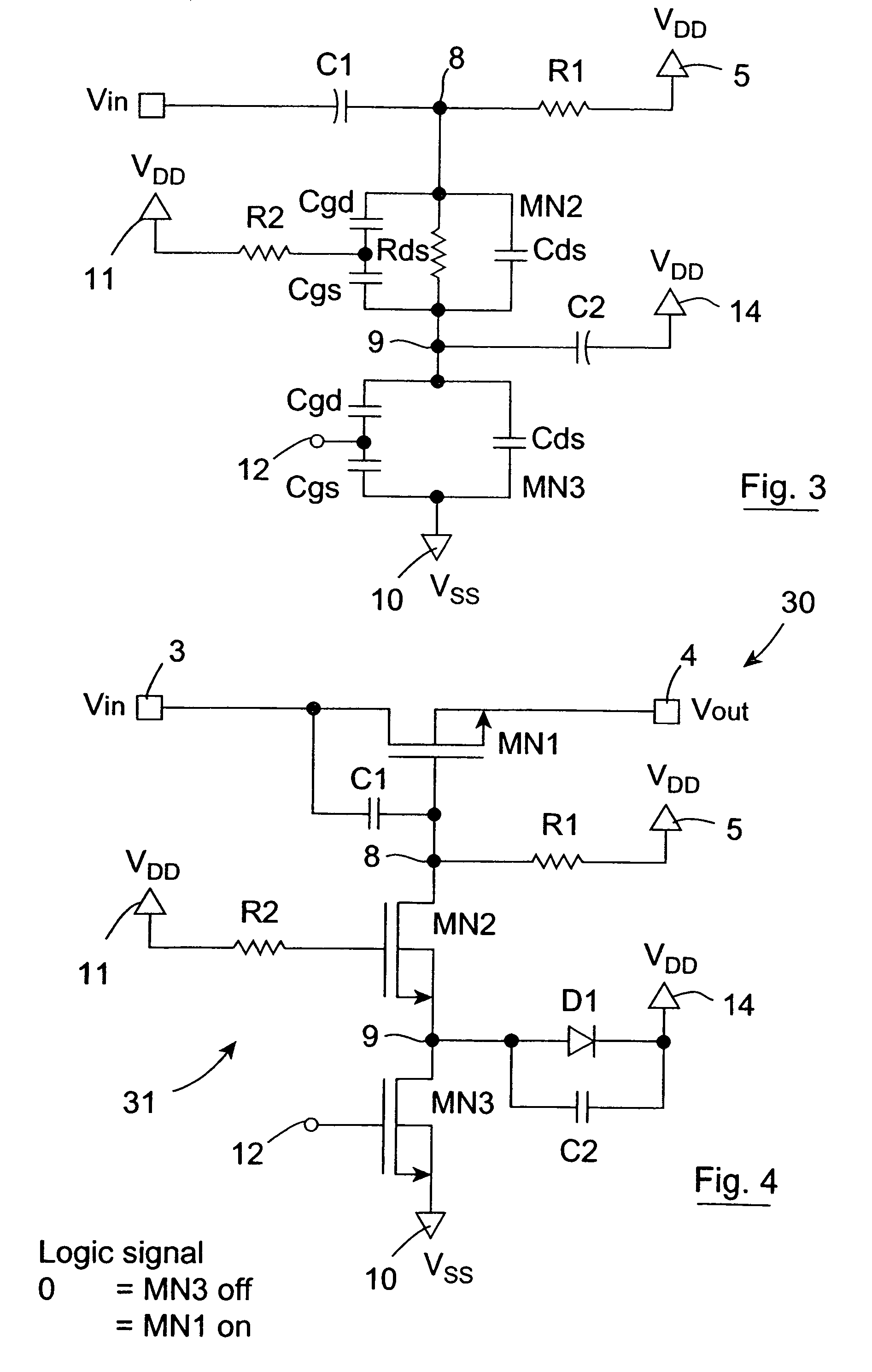Open drain driver, and a switch comprising the open drain driver
a technology of open drain and driver, which is applied in the direction of electronic switching, pulse technique, instruments, etc., can solve the problems of single fet failing as a result of over-voltage, single fet suffering from serious disadvantage of open drain driver, etc., to improve over-voltage protection, enhance over-voltage protection, and minimise the vulnerability of open drain driver
- Summary
- Abstract
- Description
- Claims
- Application Information
AI Technical Summary
Benefits of technology
Problems solved by technology
Method used
Image
Examples
Embodiment Construction
[0090]Referring to the drawings and initially to FIG. 1, there is illustrated a switch circuit according to the invention, indicated generally by the reference numeral 1 for selectively switching an input signal Vin. In this case the switch circuit 1 is implemented as a low voltage CMOS integrated circuit, and is particularly suitable for switching a high frequency analogue AC input signal Vin, for example, an analogue video signal of frequency in the range of 27 MHz to 81 MHz, although needless to say, the switch circuit 1 is suitable for switching any type of signal, both AC and DC.
[0091]The switch circuit 1 comprises a main input terminal 3 to which the input signal Vin is applied, and a main output terminal 4 to which the input signal Vin is switched and appears as Vout. A transistor switch provided by an N-channel MOSFET switch MN1 located between the main input terminal 3 and the main output terminal 4 selectively switches the input signal Vin to the main output terminal 4. In...
PUM
 Login to View More
Login to View More Abstract
Description
Claims
Application Information
 Login to View More
Login to View More - R&D
- Intellectual Property
- Life Sciences
- Materials
- Tech Scout
- Unparalleled Data Quality
- Higher Quality Content
- 60% Fewer Hallucinations
Browse by: Latest US Patents, China's latest patents, Technical Efficacy Thesaurus, Application Domain, Technology Topic, Popular Technical Reports.
© 2025 PatSnap. All rights reserved.Legal|Privacy policy|Modern Slavery Act Transparency Statement|Sitemap|About US| Contact US: help@patsnap.com



